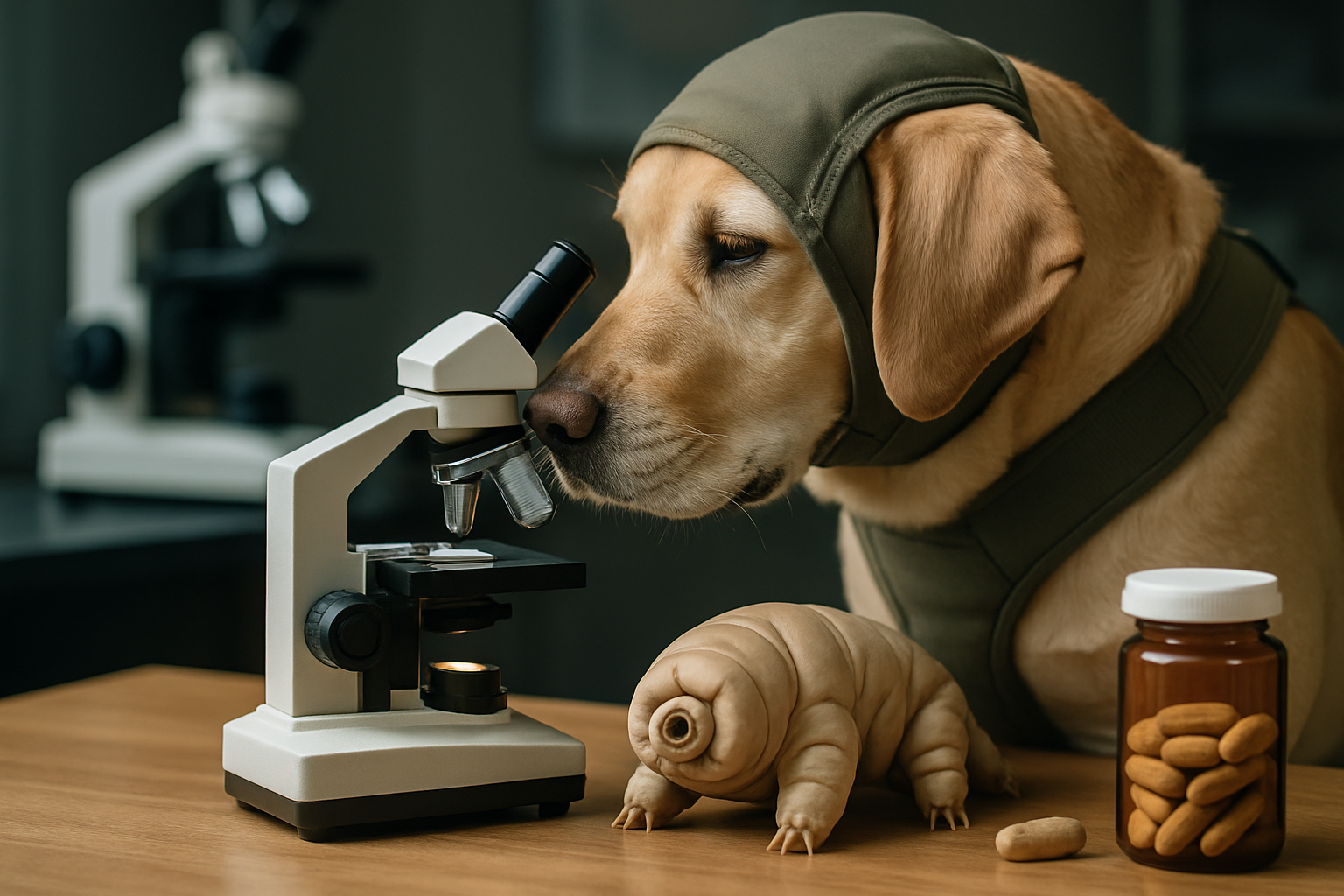Unveiling the Enigmatic World of Tardigrade Pets
In the ever-evolving realm of exotic pet ownership, a microscopic marvel has captured the imagination of science enthusiasts and animal lovers alike: the tardigrade. These tiny, resilient creatures, also known as water bears or moss piglets, are emerging as an unconventional yet fascinating choice for those seeking a unique pet experience. This article delves into the captivating world of tardigrade pets, exploring their care, ethical considerations, and the growing community of enthusiasts.

The Rise of Tardigrade Ownership
The trend of keeping tardigrades as pets began in niche scientific communities but has recently gained traction among broader audiences. This surge in interest can be attributed to increased media coverage of tardigrade research and the creatures’ appearance in popular science documentaries. As awareness grew, so did the desire to observe and care for these remarkable beings up close.
Setting Up a Tardigrade Habitat
Creating a suitable environment for tardigrade pets requires careful attention to detail. These microscopic animals thrive in moist environments, typically found in moss, lichen, or leaf litter. Aspiring tardigrade owners often start by collecting samples from local parks or purchasing specially prepared kits from scientific supply companies.
A basic tardigrade habitat consists of a small container filled with moss or lichen, kept moist but not waterlogged. The container should be covered to maintain humidity levels and prevent contamination. Regular misting with distilled water is essential to keep the environment hospitable for these tiny creatures.
Feeding and Care
Contrary to traditional pets, tardigrades do not require daily feeding. In their natural habitat, they feed on plant cells, algae, and small microorganisms. In a home setting, they can survive on the microorganisms present in their moss or lichen environment. Some enthusiasts supplement this diet with algae or bacteria cultures, though this is not always necessary.
Observing tardigrades requires patience and specialized equipment. A good quality microscope with at least 40x magnification is essential for viewing these minuscule pets. Regular checks under the microscope allow owners to monitor their tardigrades’ health and activity levels.
The Ethical Considerations
As with any form of pet ownership, keeping tardigrades raises ethical questions. While these creatures are incredibly resilient, there’s ongoing debate about the morality of removing them from their natural habitats for personal enjoyment. Some argue that tardigrade ownership promotes scientific curiosity and education, while others contend that it unnecessarily disrupts ecosystems.
Responsible tardigrade enthusiasts emphasize the importance of sustainable collection practices and advocate for captive breeding programs to reduce the impact on wild populations. They also stress the educational value of observing these creatures, particularly in sparking interest in microbiology and conservation among younger generations.
The Tardigrade Community
A vibrant community has emerged around tardigrade pet ownership, with enthusiasts sharing tips, experiences, and observations online. Forums and social media groups dedicated to tardigrade care have become hubs for knowledge exchange and support. Some members of this community have even developed specialized equipment and care products, catering to the growing market of tardigrade pet owners.
Scientific Benefits and Research Opportunities
The popularity of tardigrade pets has had an unexpected benefit for the scientific community. Amateur observations and care techniques have sometimes led to valuable insights, contributing to the broader understanding of tardigrade biology. Some universities and research institutions have begun collaborating with hobbyist tardigrade keepers, creating citizen science projects that expand the scope of tardigrade research.
Challenges and Controversies
Despite their growing popularity, tardigrade pet ownership is not without its challenges. The difficulty in observing these microscopic animals can lead to neglect or improper care. There are also concerns about the potential introduction of non-native tardigrade species into local ecosystems if habitats are not properly maintained or disposed of.
Additionally, the commercialization of tardigrade pets has raised alarm among some conservationists. They worry about the potential overexploitation of wild populations and the ecological impact of large-scale collection for the pet trade.
The Future of Tardigrade Pet Ownership
As interest in tardigrade pets continues to grow, it’s likely that we’ll see further developments in care techniques, specialized equipment, and regulations surrounding their ownership. The challenge will be balancing the educational and scientific benefits of this hobby with the need for ethical and sustainable practices.
The world of tardigrade pet ownership represents a unique intersection of scientific curiosity, conservation awareness, and the human desire to connect with nature’s most extraordinary creatures. As this trend evolves, it has the potential to inspire a new generation of microbiologists, ecologists, and conservationists, all while encouraging a deeper appreciation for the resilience and diversity of life on Earth.




